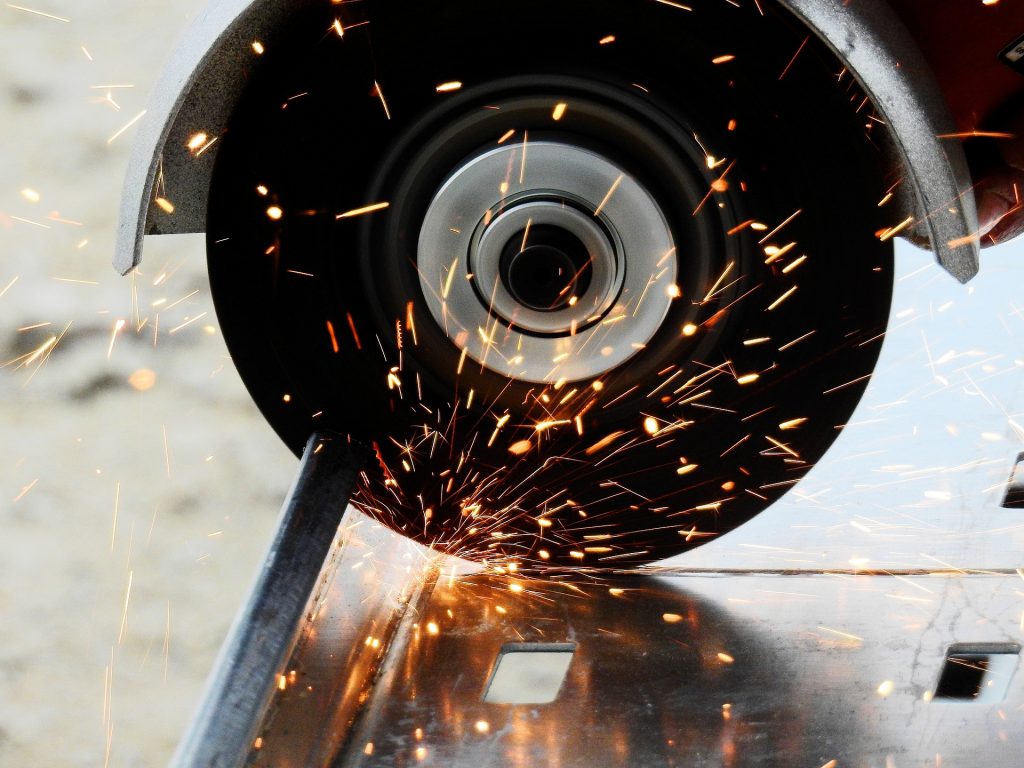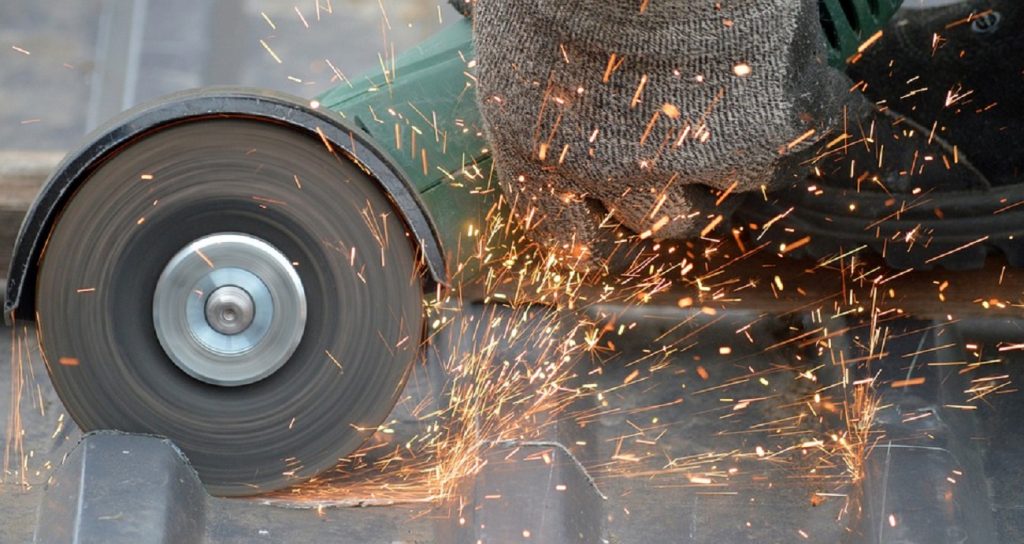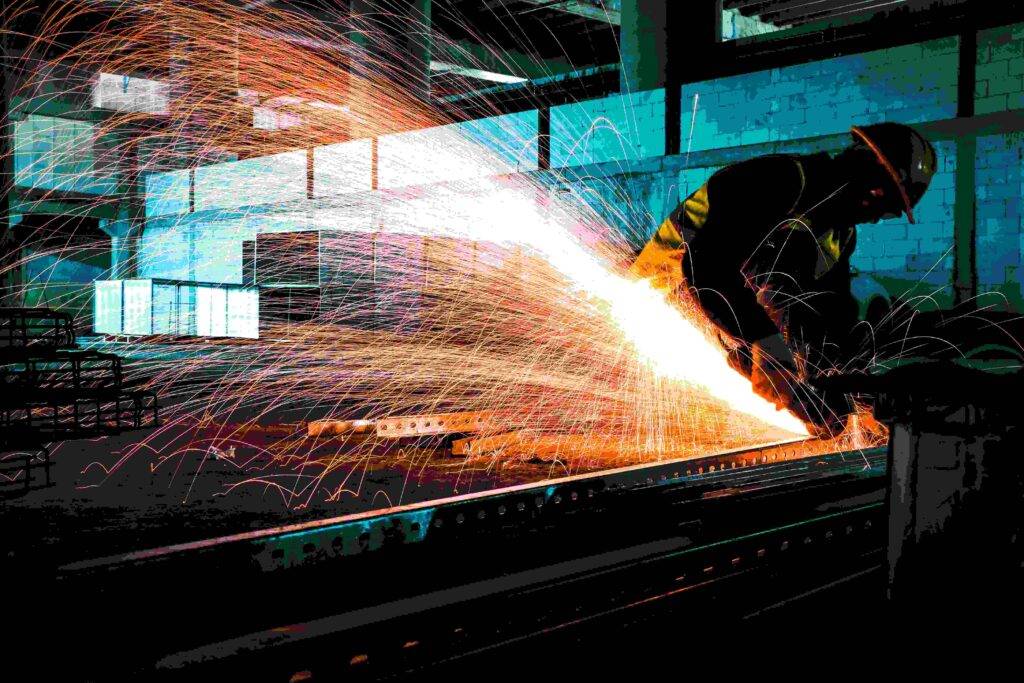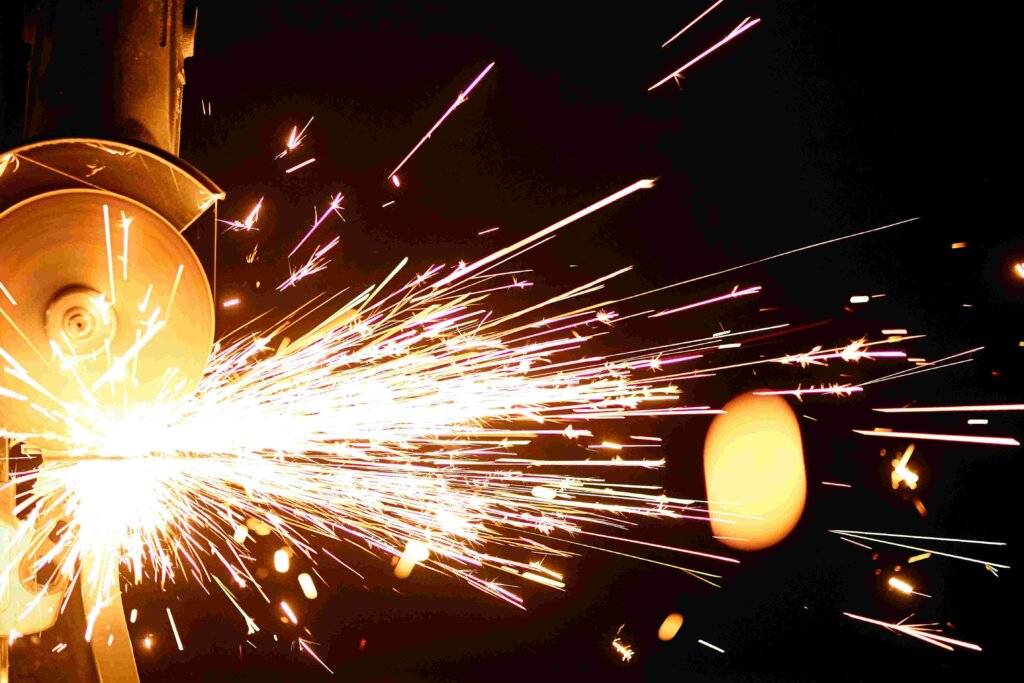Are you planning to cut Reinforced Concrete? Reinforced concrete is an essential material in many construction projects, as it is highly durable and strong. Yet, cutting it correctly is not as easy as it may seem. If the wrong tools are used or the wrong methods are employed, the structure can suffer irreparable damage.
While cutting reinforced concrete isn’t rocket science, it is essential to use the right tools and techniques to ensure the safety and integrity of the structure. For best results, it is advisable to consult an experienced specialist with knowledge in reinforced concrete cutting who can identify the right tools and techniques for the job.
Cut reinforced concrete with angle grinder is easy task
Reinforced concrete is often used for building roads, bridges, and other structures that need to withstand heavy loads. The material is usually poured into forms and then left to harden. Once hardened, the forms are removed and the concrete is ready to use.
Cut reinforced concrete with an angle grinder is challenging, but with the right tools, it can be done.
First, you’ll need to select an angle grinder that is powerful enough to cut through the reinforced concrete.
The blade should be the right size to fit the grinder, so you’ll want to make sure it has a minimum diameter of 4 inches.
Also, it’s important to pick the right type of blade. Diamond blades are the most suitable for cutting through reinforced concrete, but you can also use a carbide-tipped blade.
Next, you’ll need to prepare the area for cutting. Make sure the area is clear of all debris and that you’re wearing protective gear.
Prior to cutting with an angle grinder, it is essential to ensure the grinder is firmly secured and that you are holding it correctly.
Uneven and incorrect handling can cause the grinder to slip, resulting in potential injury.
To begin cutting, start by running the blade along the concrete and gradually deepening the cut as you go.
To create a clean and precise cut, it is important to move the blade slowly and steadily, allowing the grinder to do the work.
Additionally, be sure to wear safety gear such as safety glasses, protective gloves, and hearing protection.
Taking the necessary safety precautions will ensure the job is completed efficiently and will help prevent any potential injuries.
Here’s what you need to know about cut reinforced concrete with angle grinder

Cutting reinforced concrete is not as easy as cutting regular concrete. You’ll need special tools and techniques to do it right. If you’re planning on doing any work with concrete, make sure you learn the proper safety precautions first.
Cutting reinforced concrete is a complex task requiring specialized tools and techniques. If you’re planning to perform any work with concrete, it is essential to learn the appropriate safety precautions beforehand.
Depending on the type of concrete and the cutting task, you may need to use heavy-duty power tools to cut reinforced concrete, with safety features like dust collection systems, spark deflectors, and vibration dampening.
Furthermore, it is important to use the right cutting blades, as each type of reinforced concrete requires blades specifically designed to cut through the steel reinforcement.
Without the appropriate tools, cutting reinforced concrete can be hazardous, and the results may not be reliable. Therefore, it is essential to properly equip yourself before beginning the task.
Know the Different Types of Reinforced Concrete
There are three main types of reinforced concrete: precast, cast-in-place, and post-tensioned.
Precast concrete is poured into forms before being cured. Cast-in-place concrete is poured directly onto a foundation.
Post-tensioned concrete is tensioned after it’s been poured. Each type has its own advantages and disadvantages.
Find the Right Tools for Cutting Reinforced Concrete
You’ll need a variety of tools to cut reinforced concrete. A circular saw with a diamond blade is ideal for cutting through rebar.
If you’re using a reciprocating saw, make sure to use a carbide tipped blade. And finally, a hammer drill will help you remove reinforcement rods.
When it comes to cutting reinforced concrete, having the right tools for the job is essential for success. Reinforced concrete is an incredibly tough material, and without the right tools, the job can be difficult.
The type of tool you need depends on the size and shape of the concrete you’re working with. For large sections of concrete, a gas-powered saw with a diamond blade is the most effective tool.
If you’re dealing with a smaller piece, an electric saw with a diamond blade can do the job.
For more detailed cuts, an angle grinder with a diamond blade is the most effective choice.
It’s important to use the correct diamond blade for the job.
A blade designed for softer material won’t work effectively with reinforced concrete. It’s also important to use eye and hearing protection when operating any of these tools.
With the right tools and a bit of know-how, cutting reinforced concrete can be a relatively easy task.
Know the Different Types of Reinforcement concrete
There are two main types of reinforcement in reinforced concrete: steel and plastic.
Steel reinforcement is made of metal bars called rebar. Plastic reinforcement is made of polyethylene (PE) tubes. Both types of reinforcement are inserted into the concrete during casting.
Reinforced concrete is a composite material composed of concrete and steel or plastic reinforcement. Steel reinforcement is typically composed of rebar, which are metal bars that are inserted into the concrete during casting.
Plastic reinforcement, meanwhile, is typically composed of polyethylene (PE) tubes. Steel and plastic reinforcement play an integral role in the structural integrity of reinforced concrete, as both materials serve to add tensile strength and increase the structural capacity of the material. Steel reinforcement is known for its ability to resist compressive forces, while plastic reinforcement is desirable for its flexibility and corrosion resistance.
Reinforced concrete is an incredibly versatile material, combining the strength of steel with the durability of plastic for a variety of construction projects.
It is commonly used for foundations, walls, and other structural components, making it a popular choice for both residential and commercial building projects.
When exposed to extreme conditions, reinforced concrete retains its shape, resisting cracking, warping, and deterioration.
It is also a fire-resistant material, offering an extra layer of protection in the event of a fire. Additionally, reinforced concrete has excellent acoustic properties, reducing noise from outside sources and providing a more peaceful environment.
As a result, it is a popular choice for many builders due to its strength, durability, and versatility.
Understand the Benefits of Reinforcing Concrete
Reinforcement helps prevent cracking and other damage to the concrete. If cracks form in the concrete, water can seep through them and cause rot. This can weaken the entire structure.
Reinforcement is an essential component of any concrete structure. It helps to prevent cracking and other types of damage that could compromise the integrity of the concrete and the entire structure.
If cracks form in the concrete, water can seep through these cracks and cause rot and decay, weakening the entire structure. Reinforcement helps to reduce the likelihood of cracking, as well as providing additional structural support.
Reinforcing concrete structures is an important and recommended step for any structure that is looking to remain structurally sound for years to come.
This is especially true for structures that will be exposed to high levels of stress, as reinforced concrete is better suited to handle such stress.
Final words
Reinforcement can also help protect concrete structures from potential damage from external sources such as corrosion and wear and tear from everyday use.
By reinforcing concrete structures, you are providing an additional layer of protection and ensuring that your structure remains structurally sound and safe for many years to come.



